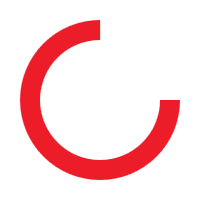
Care home residents aged over 75 are three times more likely to be admitted to hospital as emergencies than over 75s in the general population*.
Martin Jeffries, Chief Marketing Officer of Tunstall Group, shares Tunstall’s experience of using technology to support residents within care homes and reduce the number of ambulance call outs and hospital admissions.
Feb 7, 2019
Traditionally Tunstall’s solutions have been used to support people either in their own homes or in group living environments such as sheltered housing or residential care. However, in recent years our technology has been increasingly used in residential care homes and is delivering transformational results.
Older people are often admitted to hospital as a result of a fall, but combining technology with training for care home staff can help to ensure the key causes of falls are managed appropriately within the home.
Coast & Country Housing generated a net saving to the NHS of over £20,000 in six months with the introduction of telecare as part of a new model of falls management with care homes. Its HomeCall Independent Living Service worked with the North East Ambulance Service (NEAS), the South Tees NHS Falls Team and the South Tees Better Care Fund to develop a more appropriate response to non-urgent falls in the North East.
Needs assessment and falls training was carried out by South Tees Falls Team at each care home, and HomeCall staff visited each home to install telecare equipment and train staff on its use. Technology included bed and chair occupancy sensors [Link to product data sheets] – a specially designed pressure pad which fits under the mattress or seat and provides an early warning by alerting that the user has left their bed or chair and not returned within a pre-set time period and may be at risk of falling.
Telecare enables staff to respond straight away if a sensor detects that a resident is at risk of falling, in many cases enabling them to support the resident before they fall, e.g. when getting out of bed to use the bathroom during the night. If a fall does occur, telecare means staff are alerted immediately, rather than as a result of, for example, an hourly check.
Telecare is also being used to help prevent falls and mitigate their effects in Calderdale, as part of NHS Calderdale Clinical Commissioning Group’s (CCG) Quest for Quality in Care Homes. They’re also using bed and chair occupancy sensors, along with fall detectors and Passive Infrared Sensors (PIRs). One resident with dementia used to have more than ten falls per month with multiple admissions to hospital. The resident now wears a Vibby fall detector on the wrist, meaning staff can provide 24/7 monitoring and appropriate care. The number of falls has reduced to around two per month.
One care home has a hallway area with limited staff visibility, where previously residents had fallen, resulting in hospital admissions. A PIR sensor has been fitted at the bottom of the corridor to alert staff during the day if someone goes down to the corridor and there have been no falls in this area of the home since.
Overall, 50% of care homes using telecare (14 out of 28) have seen a reduction in falls of at least 10%, and admissions to hospital related to falls have reduced by 7.7% year-on-year from 2016/17 to 2017/18 which has resulted in savings through the Quest programme in excess of £200,000.
The Quest for Quality in Care Homes is also using telehealth to support residents, with care staff taking residents’ vital signs readings such as blood pressure, temperature and oxygen saturation. Results outside of parameters set for that resident will raise an alert on the system and inform the Quest Matron.
Results can also be viewed via a secure portal at any time, enabling trends to be identified. Using telehealth enables causes for concern to be identified at an early stage, enabling early intervention and avoiding the need for more complex care. For example, a raised temperature could indicate the start of an infection; telehealth enables this to be identified earlier than may otherwise be the case, particularly as many residents of care homes have dementia and are unable to describe their symptoms.
Our experience of improving services for care home residents through the use of clinically-led technology-enabled models of care has been described in a new paper, NHS Demand Management from Care Homes, which analyses case studies and assesses the potential if the local results were replicated nationally.
The conclusions are striking; the economic value of the capacity released is close to £1bn per annum for NHS England. As our population continues to age, and our health and care services continue to face increasing pressure, the technology opportunity for care homes is one that cannot be ignored.